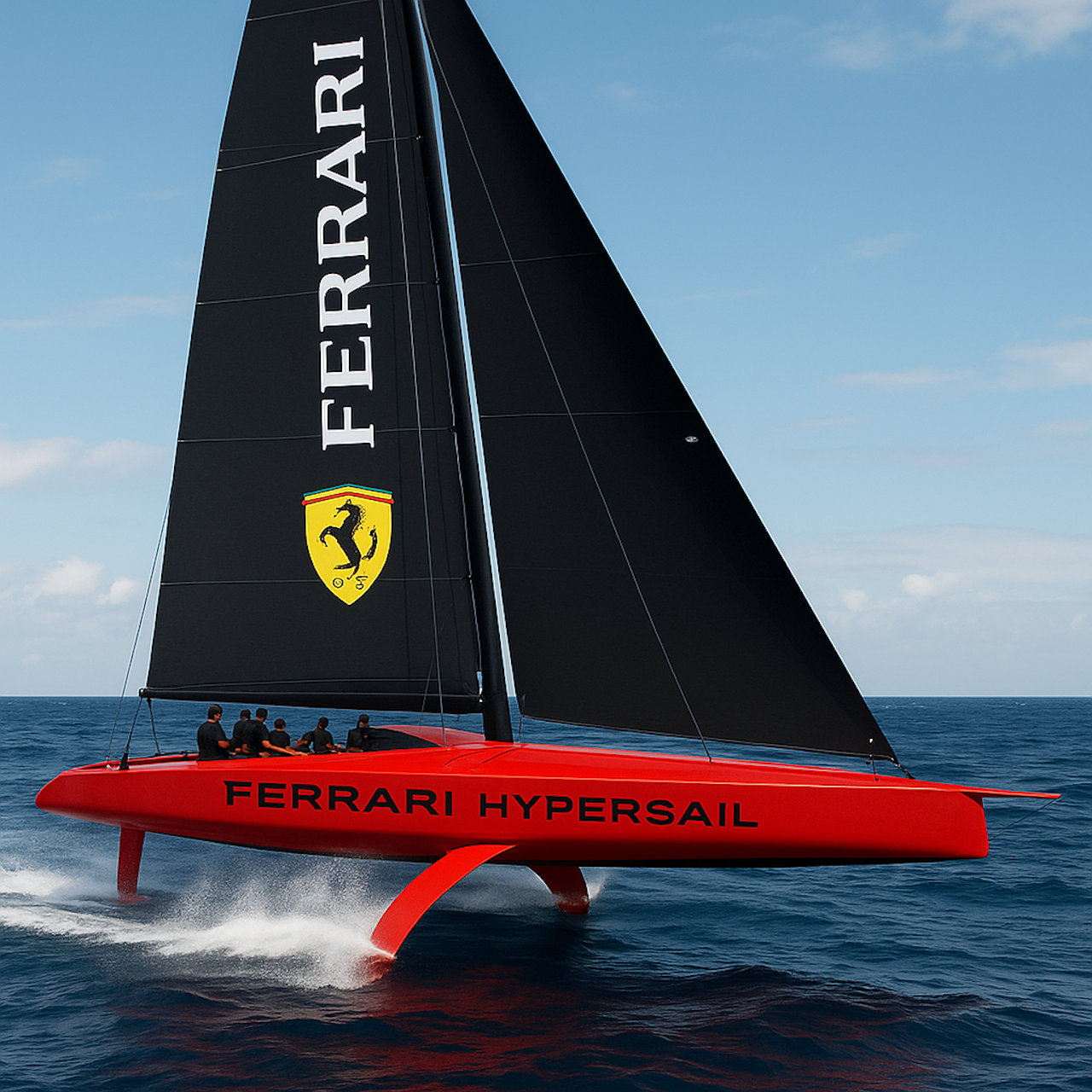Ferrari's Hypersail

The Hypersail project centres around a 100-foot full-foiling monohull yacht, scheduled for launch in 2026. Designed by acclaimed naval architect Guillaume Verdier, the vessel promises not only visual impact but also technological breakthrough. The sleek, red craft will fly across the oceans using advanced hydrofoils—sophisticated underwater wings that lift the hull out of the water at speed, dramatically reducing drag and increasing efficiency. But Ferrari’s ambitions extend far beyond raw speed.
What sets Hypersail apart is its energy self-sufficiency. Entirely emission-free, the vessel will operate without a combustion engine. Instead, it draws its power from renewable sources—solar panels, wind energy, and kinetic regeneration. Every onboard system, from the computer-controlled foils to life support, will be powered by sustainably harvested energy. In an era where both motorsport and marine industries are under pressure to decarbonise, Hypersail is a visionary answer from one of the world’s most prestigious brands.
The crossover between land and sea is more than symbolic. Ferrari is transferring advanced knowledge from its Formula 1 and road car divisions—notably, carbon-fiber construction, aerodynamic modelling, and smart suspension control systems. The project has already generated nine patents, with another six underway. These cover innovations ranging from control system algorithms and energy distribution technologies to new materials and adaptive structure designs.
Leading this ambitious charge is Giovanni Soldini, one of Italy’s most experienced and decorated ocean racers. Soldini, who’s known for pushing the limits of solo and crewed long-distance sailing, is overseeing both the design and future performance strategy of Hypersail. The yacht will be crewed by a team of 8 to 12 elite sailors, making it a lean, high-performance machine capable of sustained speeds previously unseen in conventional monohulls.
While the natural question is whether Ferrari will enter races like the America’s Cup, the company has made it clear that Hypersail is, first and foremost, an R&D platform. Because of its extreme dimensions and innovations, the vessel doesn’t comply with current class rules. The short-term goal isn’t competition, but rather pushing boundaries, gathering data, and testing systems in the extreme, unpredictable theatre of the open ocean.
Construction is already underway in Italy, with full sea trials set for 2026. These will test the limits of the boat’s foiling capability, energy autonomy, and intelligent control systems. As Ferrari puts it, the ocean is “a natural laboratory” for developing new solutions that may eventually flow back into automotive design. Whether it’s aerodynamic profiling, lightweight construction, or next-gen energy systems, the feedback loop between Hypersail and Ferrari’s core business could prove revolutionary.
This leap into offshore sailing also signals something deeper about Ferrari’s evolving identity. Once defined solely by combustion and horsepower, the company is now exploring sustainability, versatility, and multidisciplinary excellence. With the Hypersail project, Ferrari is proving that performance need not come at the planet’s expense—and that excellence in design is not confined to land.
Project Hypersail is not just a racing yacht; it’s a statement of intent, an embodiment of the company’s future-oriented ethos. It is bold, experimental, beautiful, and entirely uncompromising—much like the brand that birthed it.
As we await its maiden voyage in 2026, one thing is certain: Ferrari is no longer just a name on a track. It’s a force on the sea, too.










